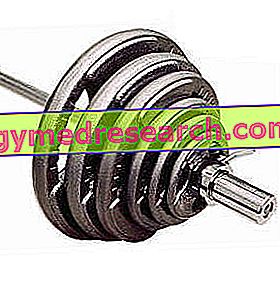What is pollinosis?
Pollinosis requires, first of all, the identification of the pollen allergen to which the subject is sensitive. The characterization of this antigen is obtained through a careful diagnostic investigation (etiological and symptomatic approach).

Drug therapy may include the prescription of preventive chromones, antihistamines for rhinitis and conjunctivitis, bronchodilators for asthma, cortisones to be administered nasally or systemically, leukotriene antagonists, etc.
In the event that the detection of the allergen is not possible and the therapy is therefore non-specific, the goal is to counteract the symptoms and other side manifestations of the disease.
The correct management of pollen allergy involves:
- Patient education : among the indications to implement the treatment plan, it is necessary that the doctor provides the allergic patient with clear and precise information on the triggers, on the possible taking of drugs and on the precautions to be taken.
- Environmental prevention : to prevent the appearance of the typical symptoms of pollen allergy it is necessary, as far as possible, to avoid contact with the responsible allergen.
- Drug therapy : the allergic patient can follow a medical prescription treatment, with different purposes (preventive, symptomatic and anti-inflammatory drugs).
The pharmacological therapy of pollinosis
Once exposure to allergenic pollen has taken place and the manifestation of symptoms has become evident, it is possible to intervene mainly to improve the patient's clinical conditions.
Preventive drugs
Preventive pharmacological therapy is essentially based on the intake of cromoni, which reduce the sensitivity of the respiratory system to allergenic pollen. These drugs are used to prevent allergic reactions and bronchial asthma attacks. For this reason, treatment should be started before possible exposure to pollen allergens. In particular, the start of preventive therapy should take place two to four weeks before the flowering season typical of the botanical species that makes the allergic patient susceptible. Thereafter, treatment should be continued throughout the period at risk, with regular intake of the indicated drug. In order to monitor the advent of the pollination period, it is possible to consult the forecasts indicated in the flowering calendars.
Preventive drugs:
- They are available in the form of solutions to be inhaled using an aerosol appliance, spray, eye drops and capsules containing an inhalable powder with the help of special devices.
- They have limited side effects, but also a very short action, so they must be taken at very close doses. The dosage varies according to the clinical cases and is established by the doctor. In general, more administrations are needed during the day.
The disodiochromoglicato belongs to this family of drugs: endowed with a modest efficacy in the prevention of nasal symptoms, it is used in rhinological solution and has scarce side effects of local order, since it is not absorbed. Another chromone is sodium nedocromil (evolution of disodiochromoglycate): it has a limited clinical use due to poor compliance - linked to the numerous administrations needed (up to 3-4 times a day) - and to the not high clinical efficacy.
Symptomatic drugs
- Decongestants - Allergy can cause dilation of the network of blood vessels present in the nose and eyes, a phenomenon that increases congestion of the nasal mucosa, mucus secretion and tearing.
The decongestants:
- they are used for rapid and temporary relief from nasal and sinus congestion or redness and itching of the eyes; contain vasoconstrictors, substances that reduce blood supply to the mucous membrane of the nose and eyes, alleviating symptoms;
- they are available as over-the-counter and / or prescription drugs in the form of nasal sprays and eye drops .
Nasal sprays and decongestant eye drops should not be used for a long time (not more than 2-3 times a day, preferably in one-week cycles, with a few days off), because they can induce important systemic side effects : tachycardia, hypertension, arrhythmias, feeling of restlessness, burning or itching of the nose and redness of the eyes. The abuse of these drugs also causes atrophic changes in the nasal mucosa or damage to blood vessels at the ocular level. You may need to avoid decongestants in pregnancy, in old age or if you have high blood pressure (hypertension).
There are also decongestants in tablets (which have a slower but prolonged effect) but their use is less widespread, since they can cause a series of undesirable effects (irritability, arrhythmia, tachycardia, dizziness, headache, anxiety and hypertension). Before using oral decongestants, consult your doctor: they are potentially dangerous if used in combination with other drugs or if you suffer from other concomitant health problems.
- Antihistamines - Antihistamines block the activity of histamine, one of the main inflammatory chemicals released by the immune system, which is involved in allergic manifestations. As a result, the main symptoms of pollen allergy are improving.
Antihistamines are found both in the form of:
Tablets and syrups, to be taken orally;
Nasal sprays and eye drops, to be applied locally.
These drugs can help reduce the clinical signs and symptoms of the allergic reaction such as swelling, itching, watery eyes, sneezing and a runny nose, but produce a minor effect on nasal congestion. The effect lasts for several hours.
Antihistamines should be used 1-2 times a day at most for the period at risk (preferably with a few days off every now and then).
These drugs require medical prescription, due to the many side effects : headache, dizziness, nausea, epistaxis, dry mucous membranes, drowsiness, nasal burning, mild itchy eyes and tachycardia. They must not be taken while driving and are not suitable for children or elderly people. The most recent oral (new generation) antihistamines are less likely to cause drowsiness and have a more selective mechanism of action. Furthermore, these drugs have a long half-life and are administered as a single daily dose.
- Antileucotrienes - These drugs have a specific action against leukotriene receptors, inflammatory substances that are released by mast cells during the allergic reaction. In practice, they prevent leukotrienes from performing their function, thus blocking the inflammatory response and limiting allergy symptoms such as excessive production of nasal mucus.
Antileucotrienes:
- They are indicated in case of allergic rhinitis or bronchial asthma, when bronchodilators, cortisone and cromones do not give the desired results or cause serious side effects.
- They are available in the form of tablets and the dose should be established by the doctor (usually 1-2 tablets per day throughout the spring period). They are usually well tolerated; sporadically they can cause headaches and gastrointestinal disorders.
- Other possible side effects include upper respiratory tract infections and headaches in adults, ear infections and sore throat in children. The less common side effects are irritability, anxiety, abdominal pain, cough and dizziness.
- Some examples of leukotriene antagonists are montelukast and zafirlukast .



